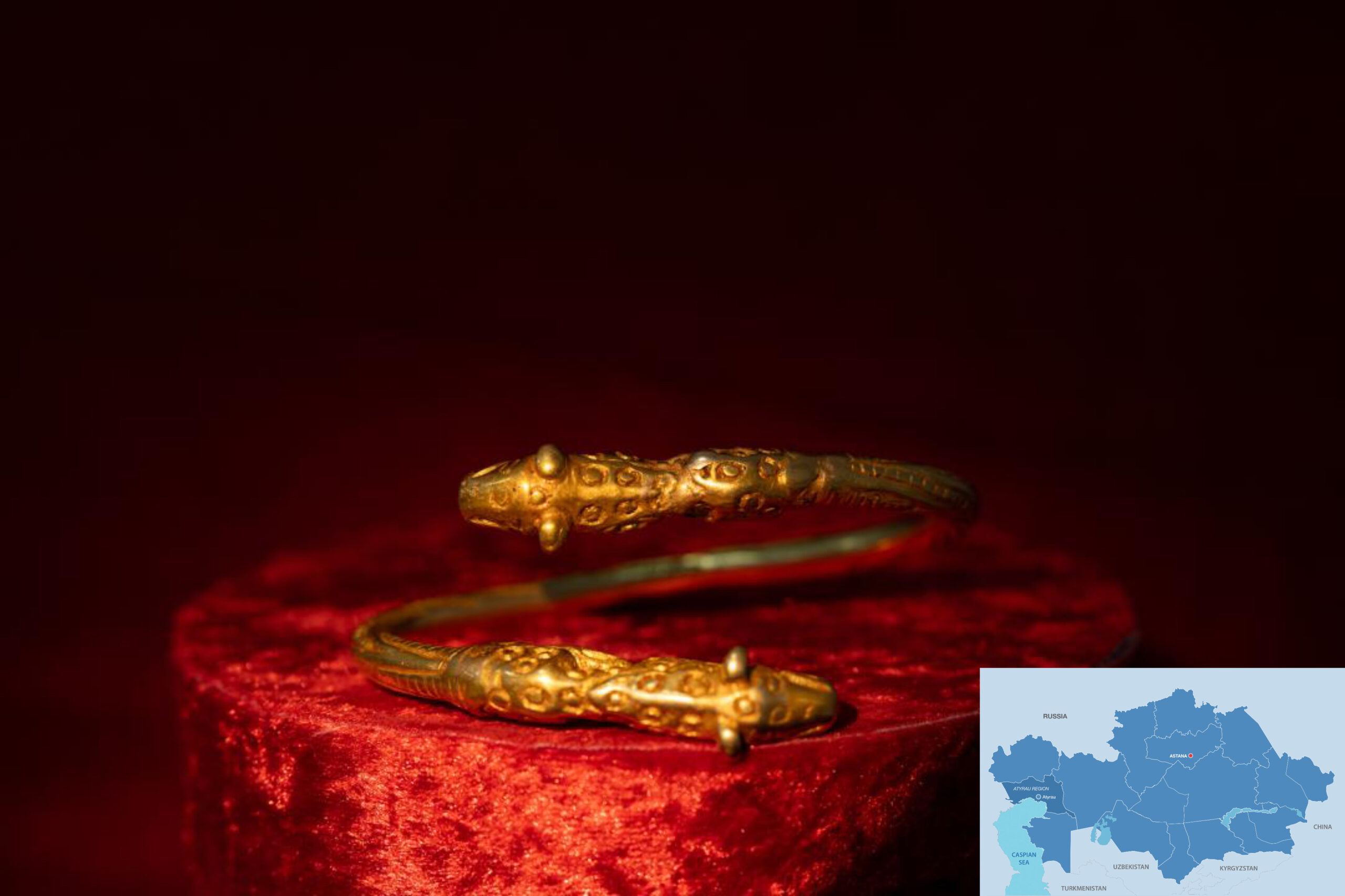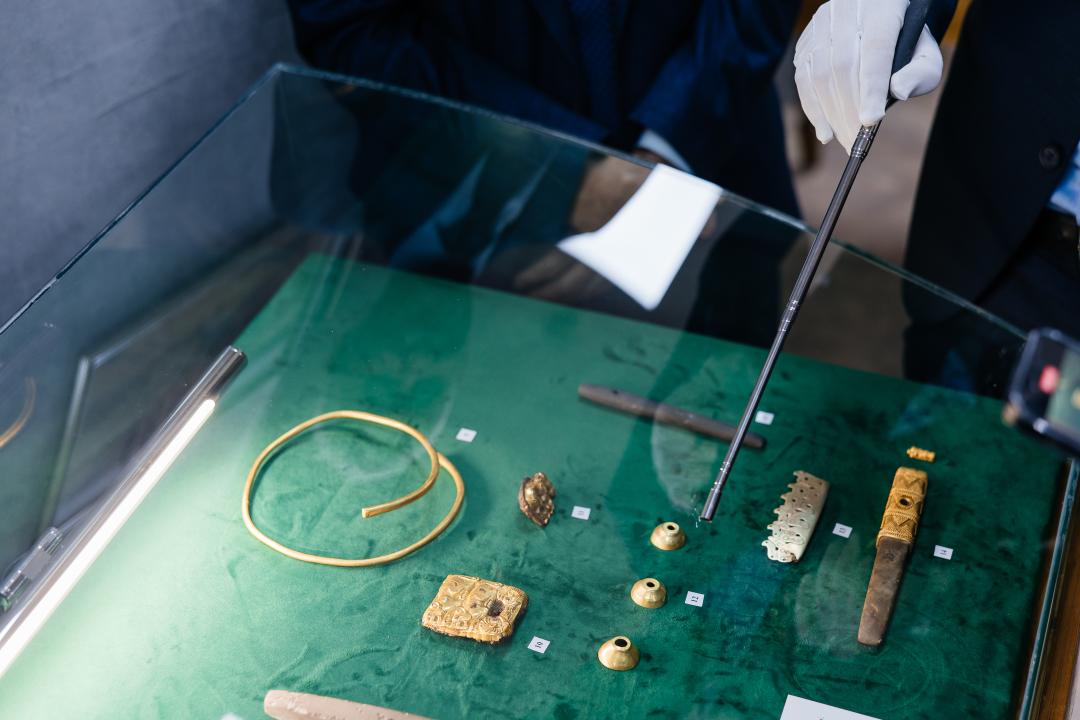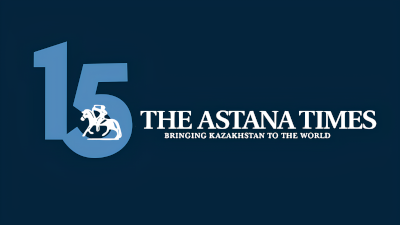ASTANA – The archaeologists discovered ancient Sarmatian burial sites in the Atyrau Region, dating back to the fifth century B.C. Excavations at the Karabau-2 mound, located 10 kilometers north of Karabau village, Kyzylkoga district, uncovered nine graves, seven of which remained preserved, reported the regional administration on Jan 27.

Ancient Sarmatian Burial Sites Discovered in the Atyrau Region. Photo credit: Gov.kz. Click to see the map in full size. The map is designed by The Astana Times.
The graves contained human remains, gold jewelry, weapons, and ceramic vessels. Some were collective burials, leading archaeologists to classify them as “royal tombs.”
Marat Kasenov, the head of the excavation team, noted that around 1,000 artifacts were found, including 100 gold ornaments decorated with images of leopards, bears, tigers and antelopes. Two rare wooden bowls, never seen before in similar excavations, were also discovered and are now being restored.

Photo credit: Gov.kz.
Further excavations at the Karakuduk-1 and Karakuduk-2 mounds, located 9.7 kilometers northwest of Karabau, revealed silver pictograms, iron and bronze weapons, and household items. A rare discovery at Karabau-2 was two touchstones with gold handles, historically used by the Sarmatians to test gold authenticity.
Galamat Bazarbayev, the head of the Atyrau Museum’s archaeological research department, highlighted another significant find—gold appliques on clothing weighing two grams and a massive 370-gram gold bracelet shaped like a mountain leopard.
The excavations in 2023-2024 involved 20 workers, five museum staff members, and anthropologists from Astana and Almaty. The findings were presented at “The Gold of the Sarmatians” exhibition, attended by regional officials, historians, and cultural experts.
“These discoveries challenge previous beliefs that the Atyrau region was only on the edge of the Sarmatian civilization. The results suggest that the Caspian Lowland, the Zhaiyk River, and the area near the Zhem River were central to the Sarmatian empire,” said Marat Kasenov.


